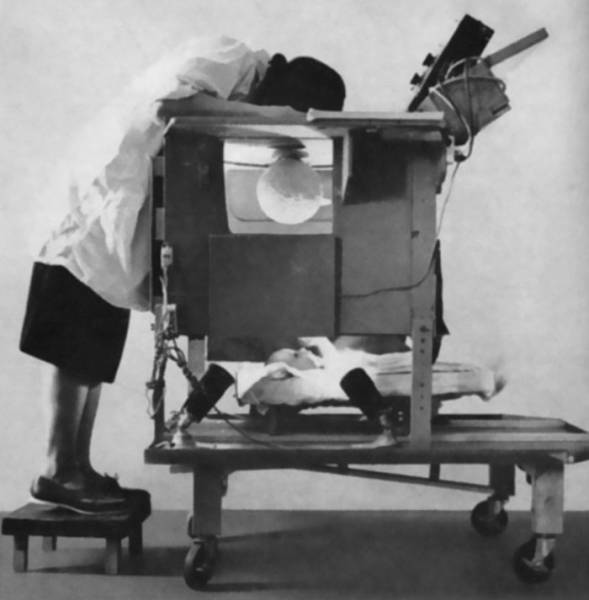Fantz’s Looking Chamber

In 1961, when Fantz carried out his simple yet genius experiment, there wasn’t much you could do to find out what was going on in a baby’s head – other than watch. And watching the baby is what he did.
An enduring feature of human nature is if there’s something of interest near us, we generally look at it. So Fantz set up a display board above the baby to which were attached two pictures. On one was a bulls-eye and on the other was the sketch of a human face. Then, from behind the board, invisible to the baby, he peeked through a hole to watch what the baby looked at.
What he found was that a two-month old baby looked twice as much at the human face as it did at the bulls-eye. This suggested that human babies have some powers of pattern and form selection. Before this it was thought that babies looked out onto a chaotic world of which they could make little sense.
As a result of this and subsequent similar studies, psychologists have suggested that we are born with a definite preference for viewing human faces. This would certainly make evolutionary sense as other human faces hold all sorts of useful information which is vital for our survival.